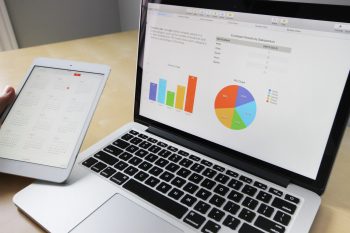Blog Series: Tips to Selecting the Best Survey Method: #2 Sampling
 Whether you are conducting an online, paper, mobile, or kiosk survey, a telephone or face-to-face interview, or a combination of survey modes, you’ll want to take into consideration the advantages and disadvantages of each survey mode. This is the second blog post in a series where we discuss issues you’ll want to take into consideration as you plan your next survey. In the first blog post, we discussed potential population issues. We now move on to potential sampling issues.
Whether you are conducting an online, paper, mobile, or kiosk survey, a telephone or face-to-face interview, or a combination of survey modes, you’ll want to take into consideration the advantages and disadvantages of each survey mode. This is the second blog post in a series where we discuss issues you’ll want to take into consideration as you plan your next survey. In the first blog post, we discussed potential population issues. We now move on to potential sampling issues.
The sample is the actual group of respondents in which you will need to contact to complete your survey. There are several important sampling issues you need to consider when planning your survey.
Sampling Issues
Take the following tips into consideration when planning your sample of respondents
- What information do you currently have available? Do you have their mailing address, email address, phone number? Is this contact information up-to-date? The current information you have can indicate the best mode in which you contact your sample. If you have a sample list of up-to-date email addresses, the logical survey mode would be an online survey sent by email invitation to your sample. If you created a paper survey prior to checking on your available sample data, for example, you’ll have to collect mailing addresses for your sample, which can be very time consuming.
- Can you reach your sample? Even if you have an up-to-date phone numbesr or email addresses for your sample, you may still have difficulty receiving responses. For example, what if you are trying to reach a sample of respondents that works 3rd shift, works long days, or travels a lot. They may be hard to reach by choosing just one survey mode. There may be a better mode to find these respondents or a combination of modes such as email (online survey), telephone interview, mobile survey, and paper survey (delivered by mail). If you need information from a hard-to-reach sample, you need to be willing to put in the additional work to collect that data.
- Are you reaching the correct respondent? For example, you collect sample data for households in a small city like Portsmouth, New Hampshire. A household, however, is not a respondent. Is there a specific individual in the household you want to reach? Do you want to reach the head-of-household? How is the head-of-household defined? Can anyone in the household complete the survey? You certainly don’t want your survey to be completed by a 4-year-old…in crayon. Additionally, how do you want to handle multi-family households? You’ll want to take all family types into consideration and include specific instructions in your survey introduction. Similar issues can arise in organizations too. Can your survey be completed by anyone in the organization, or does it need to be completed by an individual within a certain department? Is that individual willing to complete the survey or do you need to seek another qualified individual within the organization?
- Can an entire population be your sample? Lists of the entire population are often difficult to keep up-to-date making it impossible to sample an entire population. People move or change contact information daily.
- Will response rates be a problem? Plain and simple, some respondents in your sample will refuse to complete your survey. Some have good intentions to complete your survey, but may forget or misplace the survey. Low response rates continue to be the most difficult problem in survey research.
View the previous post in the series: Tips to Selecting the Best Survey Mode: #1 Population



